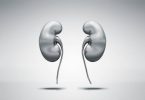Imagine living with a pain so relentless and intense that even the lightest touch feels like a blowtorch. Visualize a condition where your own body seems to betray you, causing excruciating pain that knows no bounds. This is the harsh reality for individuals living with Complex Regional Pain Syndrome (CRPS).
CRPS, also known as Reflex Sympathetic Dystrophy (RSD), is a rare and debilitating chronic pain condition that often defies easy explanation. It is a disorder that challenges the boundaries of medical understanding and the resilience of those affected. In this article, we embark on a journey to explore the enigmatic world of CRPS, shedding light on its nature, causes, symptoms, diagnosis, and treatment options.
Understanding CRPS is crucial not only for those directly impacted by the condition but also for the broader medical community and society as a whole. By delving into the basics of CRPS, we hope to raise awareness and provide valuable insights into a condition that continues to perplex and challenge both patients and healthcare professionals.
Join us as we unravel the complexities of CRPS, offering a compassionate and informative perspective on a condition that demands our attention, empathy, and unwavering commitment to finding effective solutions.
What Is Complex Regional Pain Syndrome (CRPS)?
Complex Regional Pain Syndrome, often abbreviated as CRPS, is a multifaceted and poorly understood chronic pain condition that primarily affects the limbs, although it can manifest in other parts of the body as well. Previously known as Reflex Sympathetic Dystrophy (RSD), CRPS is characterized by intense and prolonged pain disproportionate to the initial injury or cause.
Here are some key aspects of CRPS:
Types of CRPS
CRPS is typically categorized into two types: Type I and Type II:
- Type I CRPS: Formerly known as RSD, Type I occurs after an injury or trauma that did not directly damage a major nerve. It accounts for the majority of CRPS cases.
- Type II CRPS: This form, previously called causalgia, is associated with a distinct nerve injury.
Onset and Progression
CRPS often begins after an injury, surgery, or trauma, but the resulting pain is disproportionate and persists beyond the expected healing period.
The condition can progress in stages, with varying levels of severity.
Key Symptoms
- Chronic Pain: The hallmark symptom of CRPS is severe, continuous pain that may be described as burning, stabbing, throbbing, or aching.
- Swelling and Changes in Skin: Affected areas may swell, become discolored (red or purple), and display changes in temperature and texture.
- Motor and Sensory Abnormalities: CRPS can lead to muscle weakness, tremors, and changes in skin sensitivity.
- Joint Stiffness: In some cases, joint stiffness and limited range of motion may develop.
Triggers and Causes
The exact cause of CRPS remains a subject of ongoing research. It can be triggered by various factors, including injuries, surgery, fractures, or even minor trauma.
Abnormal immune responses and changes in the nervous system are believed to contribute to the condition.
A Multifaceted Condition
CRPS is more than just a pain disorder; it often encompasses a range of symptoms that affect physical, emotional, and psychological well-being.
It can lead to profound disability, making daily activities, such as self-care or work, extremely challenging.
While CRPS presents a complex and daunting set of challenges, understanding its nature is the first step in managing and eventually finding relief from its debilitating effects. In the following sections, we will delve deeper into the signs and symptoms of CRPS and explore the factors that may contribute to its development.
Signs and Symptoms of CRPS
CRPS is notorious for its diverse and often bewildering array of symptoms. To understand this condition better, it’s essential to recognize the signs and manifestations that individuals with CRPS may experience. Here are some of the primary symptoms associated with CRPS:
- Chronic and Severe Pain:
- The hallmark symptom of CRPS is unrelenting pain that is typically described as burning, stabbing, throbbing, or aching.
- This pain is often disproportionate to the initial injury or trauma that triggered the condition.
- Changes in Skin Color and Temperature:
- CRPS can lead to visible changes in the affected area, including skin that appears red, purple, or mottled.
- The skin may feel noticeably warmer or cooler than the surrounding areas.
- Swelling and Sensitivity:
- Swelling of the affected limb or area is common in CRPS.
- The skin may become excessively sensitive to touch, making even light contact painful.
- Changes in Skin Texture:
- The skin over the affected area can undergo various textural changes. It may become shiny, thin, or develop excessive sweating.
- Altered Hair and Nail Growth:
- Abnormal hair and nail growth patterns, such as increased hair growth or brittle nails, are sometimes observed in CRPS-affected limbs.
- Muscle Weakness and Atrophy:
- CRPS can lead to muscle weakness and atrophy (muscle wasting) in the affected limb.
- Reduced range of motion and muscle tremors may also occur.
- Joint Stiffness:
- Stiffness and reduced mobility of joints in the affected area can make movement painful and challenging.
- Changes in Blood Flow:
- Some individuals with CRPS experience changes in blood flow, which can result in temperature fluctuations and contribute to skin discoloration.
It’s important to note that CRPS symptoms can vary from person to person and may change over time. Additionally, the severity of symptoms can range from mild to disabling. Early diagnosis and intervention are critical to managing CRPS effectively and minimizing its impact on daily life.
Causes and Risk Factors
The precise cause of CRPS remains a subject of ongoing research and is not fully understood. However, several factors are believed to contribute to the development of CRPS, and certain individuals may be at higher risk. Here are some insights into the potential causes and risk factors associated with CRPS:
- Injury or Trauma: The most common trigger for CRPS is an injury or trauma, such as fractures, sprains, burns, or surgery. It’s important to note that not all individuals who experience these injuries develop CRPS.
- Abnormal Immune Response: CRPS is thought to involve an abnormal response of the body’s immune system. Inflammation and an exaggerated immune response in the affected area may play a role in the development of symptoms.
- Nervous System Involvement: Alterations in the function of the peripheral and central nervous systems are believed to contribute to CRPS. Abnormal signaling between nerves can lead to persistent pain.
- Genetic Predisposition: Some individuals may have a genetic predisposition to CRPS, making them more susceptible to developing the condition after an injury or trauma.
- Psychological Factors: Emotional and psychological factors can influence the development and course of CRPS. Stress, anxiety, and depression may exacerbate symptoms and make them more challenging to manage.
- Gender and Age: CRPS is more commonly diagnosed in women than in men. It can affect individuals of any age, but it often occurs in people between the ages of 40 and 60.
- Immobilization: Prolonged immobilization or lack of movement of an injured limb can increase the risk of CRPS. This is why early mobilization and physical therapy are essential after an injury.
- Infection and Inflammation: In some cases, CRPS may be triggered or exacerbated by an infection or inflammatory condition.
- Surgery-Related CRPS: CRPS can develop after surgical procedures. It’s important for both patients and healthcare providers to be aware of the signs and symptoms to facilitate early diagnosis and treatment.
Understanding the potential causes and risk factors associated with CRPS is a crucial step in identifying individuals who may be at risk and in developing strategies for prevention and early intervention. While the exact mechanisms behind CRPS are complex, ongoing research aims to unravel the mysteries of this condition and improve the lives of those affected by it.
Treatment Options
Managing CRPS involves a multifaceted approach that addresses pain relief, rehabilitation, and emotional well-being. While there is no one-size-fits-all treatment plan for CRPS, healthcare professionals work closely with patients to develop individualized strategies. Here are some of the key treatment options and interventions for CRPS:
Medications
- Pain Medications: Over-the-counter pain relievers like ibuprofen or prescription medications such as opioids may be used to manage pain.
- Antidepressants and Anticonvulsants: Certain medications in these classes can help alleviate pain and improve mood.
- Topical Analgesics: Creams or patches containing analgesic medications may provide localized pain relief.
Physical Therapy
Physical therapy plays a crucial role in CRPS management. Therapists focus on improving range of motion, strength, and function in the affected limb.
Techniques such as desensitization exercises, graded motor imagery, and mirror therapy may be employed.
Occupational Therapy
Occupational therapists assist individuals with CRPS in regaining functional independence in daily activities. They may recommend assistive devices or adaptive strategies.
Nerve Blocks
Nerve blocks involve the injection of anesthetic agents near affected nerves to provide temporary pain relief. Sympathetic nerve blocks specifically target the sympathetic nervous system.
Spinal Cord Stimulation (SCS)
SCS is a minimally invasive procedure that involves implanting a device to deliver electrical impulses to the spinal cord. It can help reduce pain signals and improve function.
Counseling and Psychological Support
Living with chronic pain can be emotionally challenging. Mental health professionals can provide counseling and coping strategies to address depression, anxiety, and stress.
Graded Motor Imagery (GMI)
GMI is a rehabilitation technique that uses mental imagery and motor imagery exercises to retrain the brain and reduce pain perception.
Medication Management
Medication management is essential to balance pain relief with potential side effects and the risk of dependence. Close monitoring by healthcare providers is crucial.
Sympathetic Nerve Surgery
In some cases, surgical interventions may be considered to disrupt the sympathetic nerve pathways responsible for CRPS symptoms.
Holistic Approaches
Complementary therapies such as acupuncture, biofeedback, and relaxation techniques may be integrated into the treatment plan to enhance overall well-being.
Lifestyle Modifications
Lifestyle adjustments, including maintaining a balanced diet, engaging in low-impact exercise, and optimizing sleep, can complement treatment efforts.
Patient Education
Educating individuals with CRPS about their condition, triggers, and self-management strategies empowers them to actively participate in their care.
It’s important to emphasize that CRPS management often requires a multidisciplinary team of healthcare professionals, including pain specialists, physical therapists, occupational therapists, and psychologists. Tailored treatment plans are essential to address each patient’s unique needs and challenges.
Finding Hope and Support
Living with CRPS can be challenging, but it’s important to remember that you are not alone in your journey. Finding hope, seeking support, and building resilience are integral parts of managing this condition.
Remember that CRPS does not define you. Your strength, determination, and ability to adapt are testaments to your resilience. While the path may be challenging, there are brighter days ahead, and you have the strength to face them.
In closing, let us emphasize that hope is a powerful ally. Together with professional care, a supportive community, and your unwavering spirit, you can navigate the challenges of CRPS and find the strength to embrace life to the fullest.








